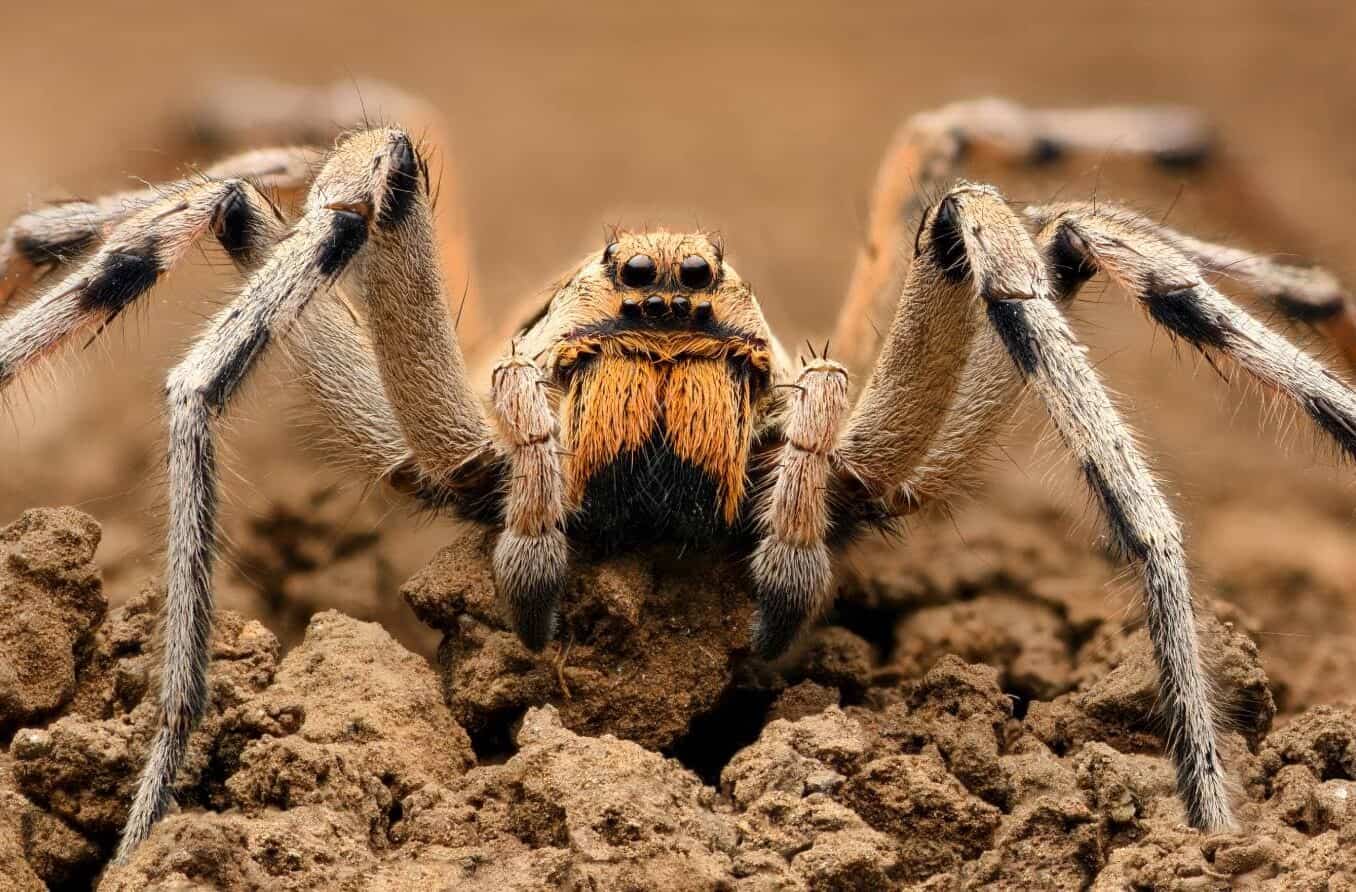Like anywhere else on the planet, Hawaii is home to a variety of different types of spiders. Most are harmless to humans and animals, but it can still be startling to run into a spider of any kind while living or traveling in Hawaii. Here are spiders that are found in the state of Hawaii.

The 20 Spider Species Found in Hawaii
1. Starbellied Orb Weaver Spider

| Species: | Acanthepeira stellata |
| Longevity: | 12 – 14 months |
| Good to own as a pet?: | No |
| Legal to own?: | Yes |
| Adult size: | ½” |
| Diet: | Carnivorous |
These spiders have spiked abdomens that are typically orangish-brown in color. They are not dangerous to humans or most pets, like cats and dogs. Their bite has been reported to feel similar to a bee sting. They do not cause harm or destruction to gardens, and in fact, they can help keep garden pests away from plants.
2. Shamrock Spider

| Species: | A. trifolium |
| Longevity: | 12 months |
| Good to own as a pet?: | No |
| Legal to own?: | Yes |
| Adult size: | 1 ½” |
| Diet: | Carnivorous |
Shamrock spiders are found sporting many different colors, including yellow, red, brown, green, and orange. They are distinguishable by the thick white bands that are located on their legs. When fully grown, these spiders can grow to about 1 ½” in length.
3. Black and Yellow Garden Spider
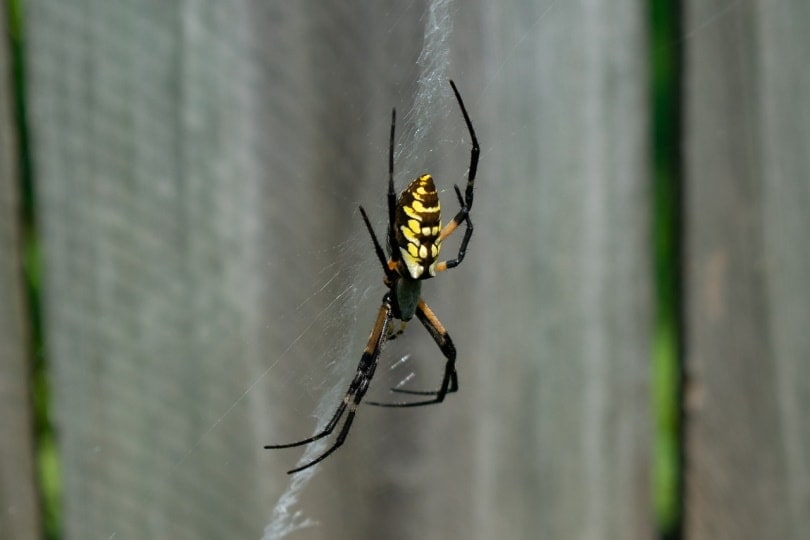
| Species: | Argiope aurantia |
| Longevity: | 12 months |
| Good to own as a pet?: | No |
| Legal to own?: | Yes |
| Adult size: | 1 1/8” |
| Diet: | Carnivorous |
This is a spider commonly found all over the world, including the United States. They are best known for their uniquely patterned black-and-yellow bellies. You will not find another type of spider that looks similar to this one.
4. American Grass Spider
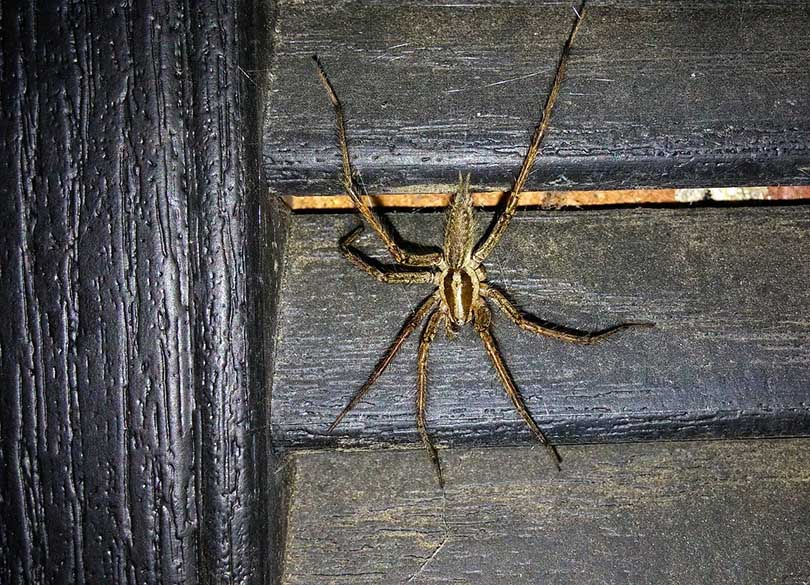
| Species: | Angelenopsis |
| Longevity: | 12 – 13 months |
| Good to own as a pet?: | No |
| Legal to own?: | Yes |
| Adult size: | ¾” |
| Diet: | Carnivorous |
One of the quickest spiders in existence, the American Grass spider is oblong and grows to only about ¾” in length, about the size of a quarter. They are typically black and/or brown all over and sometimes have stripes on their backs.
5. Northern Yellow Sac Spider
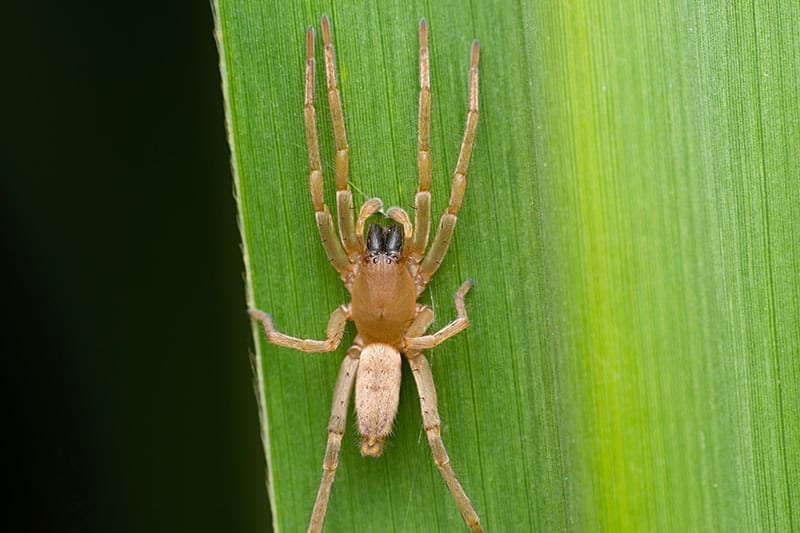
| Species: | C. cheiracanthium inclusum |
| Longevity: | 12 months |
| Good to own as a pet?: | No |
| Legal to own?: | Yes |
| Adult size: | ¼” |
| Diet: | Carnivorous |
These spiders mostly live in the Northeastern United States but have made their way to places like Hawaii over the years. They are yellowish-green in color and are most active during the day when the sun is out. They love to live in tight spaces, like cracks in houses and inside the side mirrors on cars.
6. Leaf-Curling Sac Spider
| Species: | Clubiona |
| Longevity: | 12 months |
| Good to own as a pet?: | No |
| Legal to own?: | Yes |
| Adult size: | ½” |
| Diet: | Carnivorous |
The Leaf-Curling spider is recognizable by their large, sac-like belly and long, light brown legs. They do bite when they get startled, but the bite rarely results in anything more than a sore, red spot that goes away within a day or so.
7. Fishing Spider

| Species: | Dolomedes |
| Longevity: | 12 – 14 months |
| Good to own as a pet?: | No |
| Legal to own?: | Yes |
| Adult size: | ½–¾” |
| Diet: | Carnivorous |
The Fishing spider is an expert hunter. These spiders find prey both on land and in water, which is how they got their name. They have even been known to capture and eat tiny fish. These spiders are usually found living near bodies of water, large and small, around the world.
8. Red-Spotted Ant mimic Spider
| Species: | Castianeira descripta |
| Longevity: | 11 – 12 months |
| Good to own as a pet?: | No |
| Legal to own?: | Yes |
| Adult size: | ½” |
| Diet: | Carnivorous |
As their name suggests, these spiders look and act as the common ant does. The reason for this is so they can blend into a pack of ants and get close enough for a successful hunt. They are active hunters and do not wait for the ants to visit their webs.
9. Grey House Spider
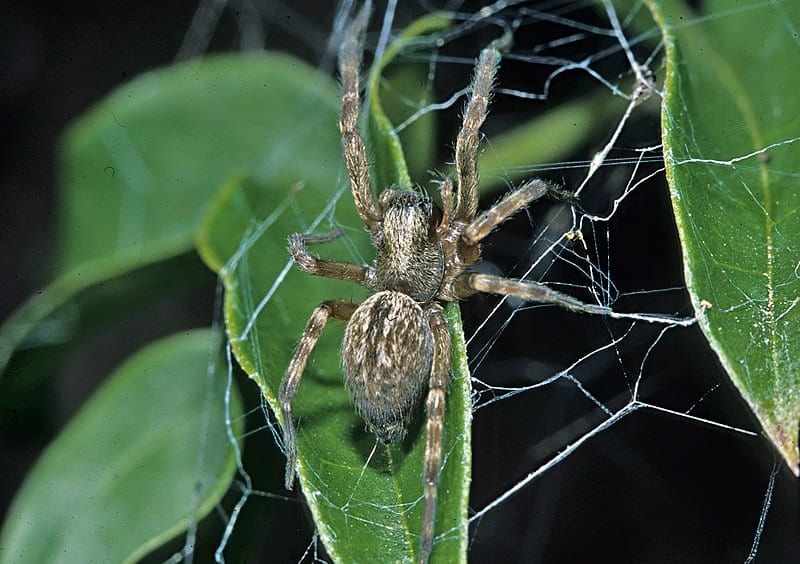
| Species: | Badumna longinqua |
| Longevity: | 12 months |
| Good to own as a pet?: | No |
| Legal to own?: | Yes |
| Adult size: | ½” |
| Diet: | Carnivorous |
These spiders were introduced to places all over the world, including Hawaii, from the beautiful lands of Australia. While most spiders that hail from Australia are known to be poisonous, this is not one such spider. The Grey House spider would rather run away from perceived threats than attack.
10. Eastern Parson Spider
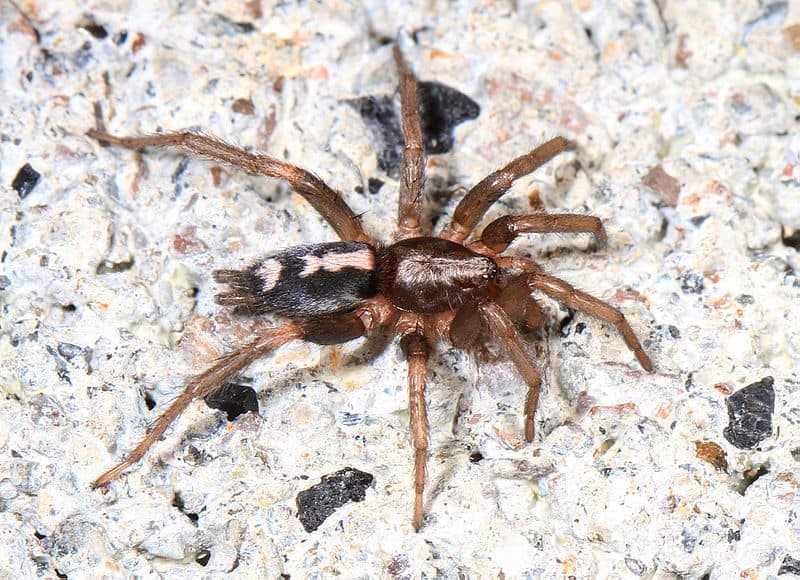
| Species: | Herpyllus ecclesiasticus |
| Longevity: | 12 months |
| Good to own as a pet?: | No |
| Legal to own?: | Yes |
| Adult size: | 1–1 ½” |
| Diet: | Carnivorous |
This dark brown or black spider has short hair all over their body, which is used to feel out tight and dark spaces. Two small spikes protrude from the spider’s belly, which are used for hunting. They like to live in woodpiles, under rocks, and in trees.
11. Spinybacked Orb Weaver Spider
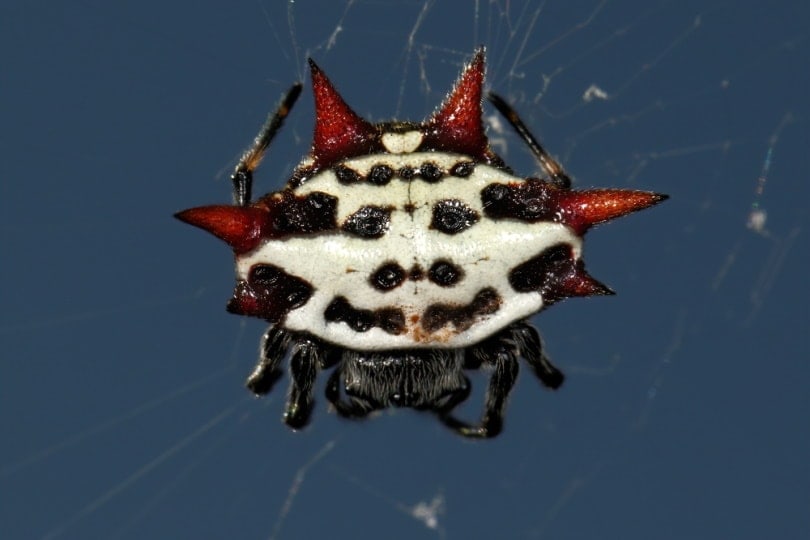
| Species: | Gasteracantha cancriformis |
| Longevity: | 12 months |
| Good to own as a pet?: | No |
| Legal to own?: | Yes |
| Adult size: | ¼ – ½” |
| Diet: | Carnivorous |
The Spinybacked Orb Weaver looks like a tiny crab, thanks to the thick spikes that grow from their sides and the fact that their abdomen is wide and oval in shape. These spiders quickly populated most areas of Hawaii after being introduced to the islands.
12. Wolf Spider
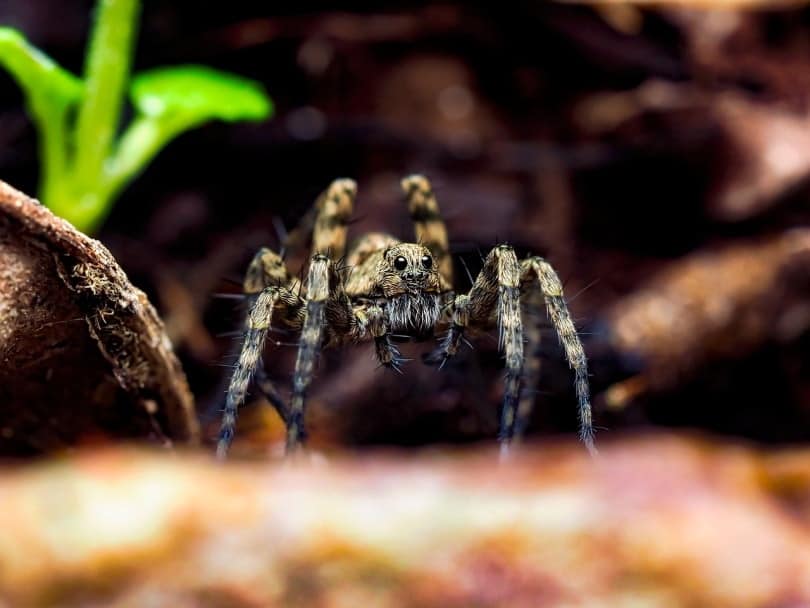
| Species: | Lycosidae |
| Longevity: | 11 – 12 months |
| Good to own as a pet?: | No |
| Legal to own?: | Yes |
| Adult size: | ½–1” |
| Diet: | Carnivorous |
Multiple species of wolf spiders can be found in remote areas throughout Hawaii, but it takes an expert to recognize the difference between any two species. They have stout bodies and strong legs that are designed to walk around rather than hang in a web.
13. Flower Crab Spider

| Species: | Misumena |
| Longevity: | 12 – 13 months |
| Good to own as a pet?: | No |
| Legal to own?: | Yes |
| Adult size: | 5/8” |
| Diet: | Carnivorous |
Officially recognized as the Misumena, this spider is usually white. However, they can transform themselves into a yellow color that melds in with flowers, which is where they find their prey. They love living near tropical flowers like the ones found naturally growing in Hawaii’s abundant wild landscape.
14. Furrow Spider
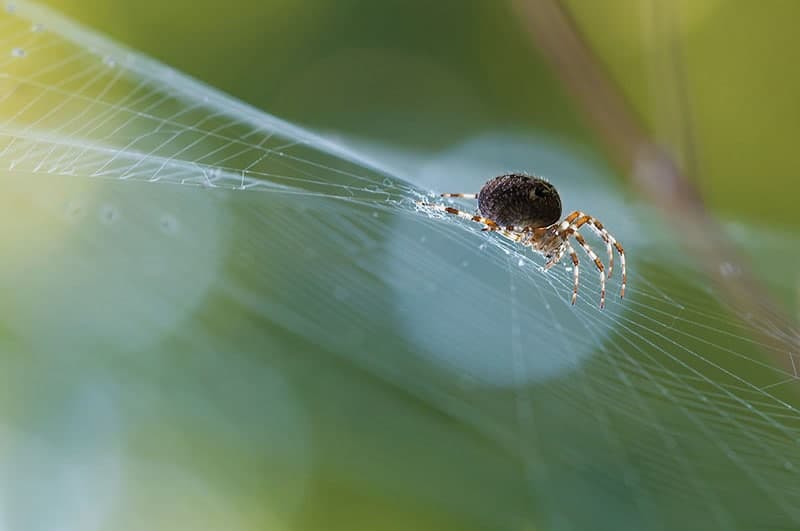
| Species: | Larinioides cornutus |
| Longevity: | 12 months |
| Good to own as a pet?: | No |
| Legal to own?: | Yes |
| Adult size: | ¾” |
| Diet: | Carnivorous |
This is a type of orb-weaver spider that has a spooky look due to their black and silver coloring and odd markings. These spiders usually burrow under decks and in sheds near humans, but they do not cause any threat.
15. Common House Spider
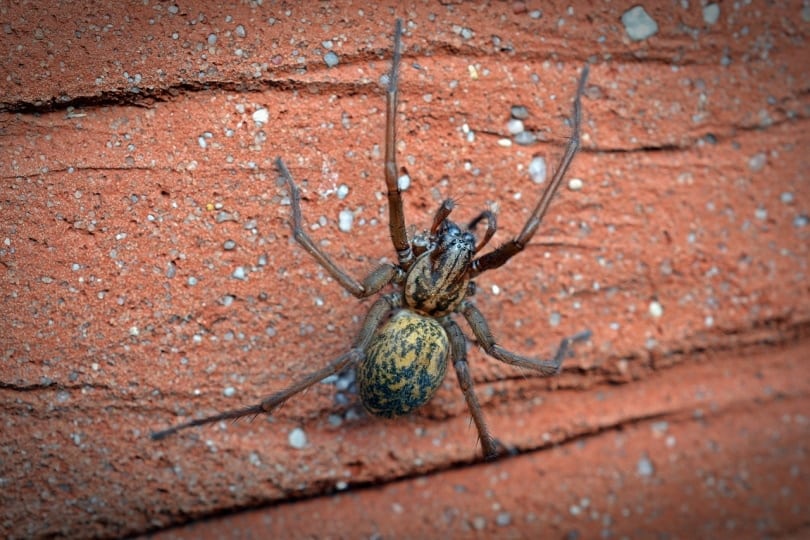
| Species: | Opiliones |
| Longevity: | 10 – 12 months |
| Good to own as a pet?: | No |
| Legal to own?: | Yes |
| Adult size: | 3/16 – 5/16” |
| Diet: | Carnivorous |
When you see a spider web in your home, it was likely created by a common house spider. These spiders are literally everywhere and can infiltrate a home quickly even if it is regularly cleaned and dusted. They like to live in packs, so where one is found, there are sure to be multiple others nearby.
16. Regal Jumping Spider

| Species: | Phidippus regius |
| Longevity: | 12 months |
| Good to own as a pet?: | No |
| Legal to own?: | Yes |
| Adult size: | ½” |
| Diet: | Carnivorous |
Regal Jumping spiders are one of the newest additions to the list of spiders that have been successfully introduced to Hawaii’s lands. Males are typically black with white markings, while females are grey with black band markings.
17. Zebra Spider

| Species: | Salticus scenicus |
| Longevity: | 12 months |
| Good to own as a pet?: | No |
| Legal to own?: | Yes |
| Adult size: | ¼” |
| Diet: | Carnivorous |
One can always identify a Zebra spider at first glance due to their brown and white striped body. The white stripes are actually little hairs that come together to create a smooth surface. The Zebra spider is small and rarely grows to more than a ¼” in size.
18. Rabbit Hutch Spider

| Species: | S. bipunctata |
| Longevity: | 11 – 13 months |
| Good to own as a pet?: | No |
| Legal to own?: | Yes |
| Adult size: | ¼” |
| Diet: | Carnivorous |
These spiders are related to the Black Widow, which they share similar looks with. However, the Rabbit Hutch spider is not venomous to humans like Black Widows are. They have a glossy coat that makes them look shiny in the sun.
19. Arrowhead Spider
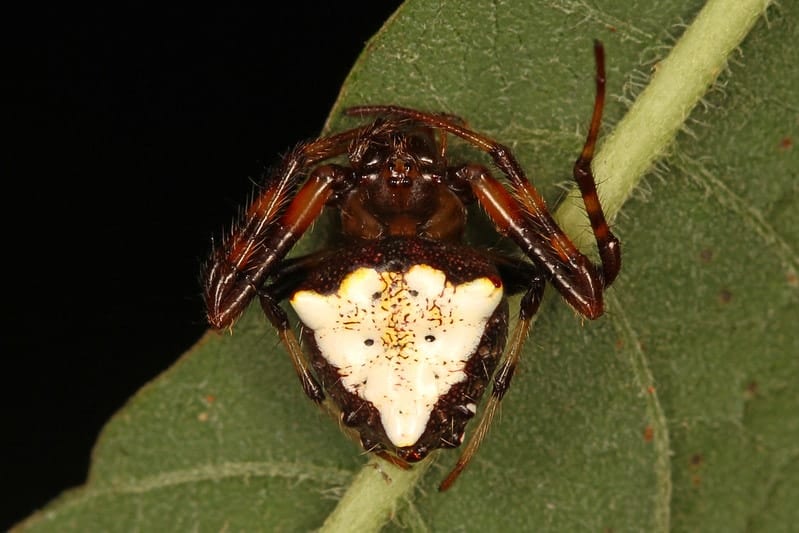
| Species: | Verrucosa arenata |
| Longevity: | 12 months |
| Good to own as a pet?: | No |
| Legal to own?: | Yes |
| Adult size: | ¼” |
| Diet: | Carnivorous |
These spiders have interesting triangle-shaped markings on their bellies that look similar to arrowheads. The arrowhead marking is usually cream or yellow in color. This spider may be red, orange, or light brown and have red or yellow markings on the legs.
20. Banana Spider

| Species: | Cupiennius |
| Longevity: | 12 months |
| Good to own as a pet?: | No |
| Legal to own?: | Yes |
| Adult size: | 1 – 2” |
| Diet: | Carnivorous |
These spiders enjoy living in warm, tropical climates, which is why they have proliferated throughout the Hawaiian Islands in recent years. Their bodies are oblong and yellow, making them look a little like bananas, which is how they got their name.

Conclusion
If you keep an eye out while spending time in Hawaii, you are sure to spot at least a couple of the spiders listed here. Have you seen any of these spiders in your Hawaiian home or anywhere else in the world? Let us know in the comments section!
You may also read about:
Featured Image Credit: Cornel Constantin, Shutterstock
